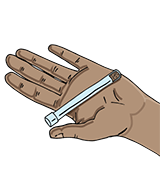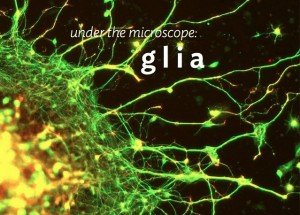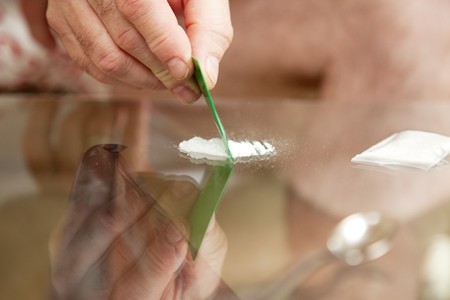Lurisadone is Effective in Mixed Unipolar Depression
Lurasidone (Latuda) has been approved by the US Food and Drug Administration (FDA) for the treatment of bipolar depression. A new study indicates that lurasidone is also effective in those with unipolar depression complicated by a few manic features, i.e. mixed depression, which is often more severe and less responsive to traditional antidepressants than traditional unipolar depression.
At a 2015 scientific meeting, Andrew Nierenberg and colleagues presented the results of a six-week study comparing 20–60 mg of lurasidone to placebo in about 200 depressed patients who had some manic symptoms. Lurasidone significantly improved unipolar depressive symptoms in addition to the mixed manic symptoms.
At baseline, the patients’ manic symptoms included: flight of ideas/racing thoughts in 66.8% of the participants, pressured speech in 61.1%, decreased need for sleep in 40.8%, increased energy or activity in 28.0%, elevated or expansive mood in 18.0%, increased or excessive involvement in pleasurable activities in 15.6%, and inflated self-esteem or grandiosity in 6.6%.
Lithium Improves Medical Outcomes
Lithium is one of the most effective medications for bipolar disorder, but it has other benefits as well. At a 2015 scientific meeting, Ronald Fieve reported that among 1021 psychiatric outpatients, 570 who received long-term lithium treatment for their psychiatric illnesses had a significantly lower likelihood of certain medical conditions compared to the other outpatients who did not receive lithium therapy. The medical conditions that lithium made less likely were seizures, amyotrophic lateral sclerosis (ALS) or Lou Gehrig’s disease, dementia, and heart attack.
It is not yet know how lithium decreases these medical conditions. It may be by increasing the length of telomeres. Telomeres are repeated DNA sequences that sit at the end of chromosomes and protect them during cell replication. Telomeres get shorter with aging and with stressors or psychiatric illnesses. Lithium directly increases the enzyme telomerase, which maintains telomere length. This may be one reason lithium use provides some protection from seizures, heart attacks, and other conditions.
Modafinil May Help Cocaine Users Prevent Relapse
 There is currently no Food and Drug Administration–approved treatment for cocaine addiction. One reason may be that in studies of treatments for cocaine use, participants may have a wide variety of exposure to cocaine. Some may be regularly using cocaine, while others may have gone some time without using the drug. A recent study by Margaret Haney and colleagues addressed some of these challenges by comparing the addiction treatment modafinil to placebo in different scenarios—such as when cocaine users have access to cheap cocaine versus expensive cocaine—and determining under which circumstances modafinil reduces the use of smoked cocaine.
There is currently no Food and Drug Administration–approved treatment for cocaine addiction. One reason may be that in studies of treatments for cocaine use, participants may have a wide variety of exposure to cocaine. Some may be regularly using cocaine, while others may have gone some time without using the drug. A recent study by Margaret Haney and colleagues addressed some of these challenges by comparing the addiction treatment modafinil to placebo in different scenarios—such as when cocaine users have access to cheap cocaine versus expensive cocaine—and determining under which circumstances modafinil reduces the use of smoked cocaine.
In the study, presented at a scientific meeting in 2015, Haney and colleagues reported that among people who were not currently smoking cocaine, modafinil reduced cocaine use compared to placebo, but modafinil did not reduce cocaine use among people who had recently smoked cocaine. Modafinil also reduced cocaine use when the drug was expensive, but not when participants had access to cheap $5 cocaine. According to the researchers, these findings suggest that modafinil may be more useful at preventing relapse than at helping current users of cocaine achieve abstinence.
Editor’s Note: While they are not FDA-approved, two other treatments can reduce cocaine use, according to placebo-controlled studies: the antioxidant N-acetylcysteine (NAC) and the anticonvulsant topiramate.
NAC Reduces Alcohol Cravings, If Not Use
The antioxidant N-acetylcysteine (NAC) has been found to reduce many types of habitual behavior, from gambling to drug use to compulsive hair-pulling. A recent study by researcher Gihyun Yoon and colleagues, which was presented at a 2015 scientific meeting, found that while NAC and placebo reduced days of heavy drinking by about the same rates, NAC significantly reduced alcohol cravings and quality of life compared to placebo among participants with alcohol dependence.
In the 8-week study, 44 participants aged 18–65 received either 3600mg/day of NAC or a placebo. This dose of NAC was higher than the 600mg–2400mg doses that have typically been used in research settings, and there were few side effects, confirming that NAC is a safe treatment.
The authors are not sure how NAC produces this effect, but it may be by regulating the neurotransmitter glutamate.
Medications that Regulate Glutamate Transporters Can Reduce Cocaine Craving
Glia are brain cells that surround neurons and synapses, protecting and insulating them. Chronic cocaine use and withdrawal changes the way certain glial cells, called astrocytes, interact with neurons. In particular, chronic cocaine use and withdrawal can shrink astrocytes and cause them to pull away from neurons. Cocaine use and withdrawal also interfere with the way the neurotransmitter glutamate is cleared from synapses and transported into astrocytes.
New research shows that certain medications that regulate and increase the movement of glutamate from the synapse into glial cells can reduce cravings for cocaine.
In studies of rats chronically exposed to cocaine and then denied access to it, treatment with these glutamate-targeting medications reduces the rats’ cocaine-seeking behaviors. The medications include N-acetylcysteine (NAC), an antioxidant that can reduce habitual behaviors, including addictive behaviors; riluzole, a treatment for amyotrophic lateral sclerosis (ALS), also known as Lou Gehrig’s disease; the antibiotic ceftriaxone; and propentofylline, which has been explored as a possible treatment for dementia and stroke.
Nutritional Supplement NAC Reduces Skin-Picking
The antioxidant N-acetylcysteine (NAC) has been found to be an effective treatment for a variety of habit-based behaviors—substance abuse, including cocaine, alcohol, marijuana, and nicotine; gambling; obsessive-compulsive behaviors; trichotillomania (compulsive hair-pulling), and repetitive behaviors among people with autism. Recent research by researcher Jon Grant and colleagues revealed that NAC can also treat skin-picking disorder.
At a 2015 scientific meeting, Grant reported that 1200–3000mg of NAC per day led to improvement in 47.1% of patients with a skin-picking disorder, compared to 19.2% improvement in patients who received placebo.
In addition to its positive effects in people with addictions and habit-based behaviors, NAC has also improved mood and anxiety in bipolar disorder and treated negative symptoms of schizophrenia, such as withdrawal and lack of motivation.
Editor’s Note: Given NAC’s effectiveness in such a wide range of disorders and behaviors, it could be a particularly useful treatment for people with major psychiatric disorders, such as bipolar disorder or schizophrenia, with co-occurring substance abuse.
Multiple Risks of Benzodiazepine Use
Benzodiazepines are a class of drugs that became widely used in the 1970s for their ability to reduce panic, anxiety, and insomnia. Some also functioned as anticonvulsants, reducing seizures. They are considered “downers,” with sedating qualities.
New research shows that benzodiazepine use, particularly long-term use, comes with risks such as increased mortality and mood instability.
At a 2015 scientific meeting, researcher Jari Tiihonen reported that among 21,492 patients with schizophrenia in Sweden, benzodiazepine use was associated with increased mortality, while antidepressant and antipsychotic use decreased mortality.
At the same meeting, researcher Cristina Albott reported that benzodiazepines may interfere with the rapid onset of antidepressant effects usually brought about by intravenous treatment with the drug ketamine.
In 2010, researcher Roy Perlis reported in the Journal of Clinical Psychiatry that in STEP-BD, a large study of people with bipolar disorder, benzodiazepine use was associated with an increased risk of recurrence of mood episodes.
Editor’s Note: Benzodiazepines can also exacerbate symptoms of post-traumatic stress disorder (PTSD) and regular use can lead to a decrease in lifespan. It now seems as though there are many reasons to exercise caution in the use of these drugs.
In Small Open Study, Dietary Supplement Improves Post Partum Blues
Post-partum depression affects 13% of new mothers, but little is known about how to prevent it. Doctors are researching ways of reducing post-partum blues, which can occur 4–6 days after delivery, when levels of the enzyme monoamine oxidase-A are high. At a 2015 scientific meeting, researchers led by Yekta Dowlati of the Centre for Addiction and Mental Health at the University of Toronto reported that a nutritional supplement designed to counteract the high levels of monoamine oxidase-A improved depression among 17 healthy women who had recently given birth, compared to 16 new mothers who did not receive the supplement. The supplement contained 2g of tryptophan and 10g of tyrosine, both amino acids found in protein-rich foods, plus blueberry juice and a blueberry extract.
Poverty Early in Life Decreases White Matter Integrity in the Brain
One-fifth of children in America grow up in poor families. Poverty can affect development, health, and achievement, and new evidence shows it even affects brain structure.
New unpublished research suggests that early poverty can affect the brain’s structure into adulthood. At a 2015 scientific meeting, researcher James Swain reported that socio-economic status at age 9 was associated with the integrity of white matter in several regions of the brain, including the hippocampus, parahippocampal gyrus, dorsolateral prefrontal cortex, ventrolateral prefrontal cortex, corpus collosum, and thalamus at age 23–25, regardless of income at that time.
The brain regions affected by childhood poverty support executive function (planning and implementation skills), social cognition, memory, and language processing. White matter provides the physical connections between parts of the brain, so damage to white matter may lead to problems with functional connectivity of the brain.
New Study Suggests RTMS Can Reduce Cocaine Use and Cocaine Cravings
Repeated transcranial magnetic stimulation, or rTMS, is a non-invasive treatment in which a magnetic coil placed near the skull transmits electrical signals to the brain. It is an effective treatment for depression, and now it appears it may also be useful in the treatment of addictions.
A pilot study by Alberto Terraneo and colleagues published in European Neuropsychopharmacology in 2016 compared rTMS treatment delivered to the dorsolateral prefrontal cortex to pharmacological treatment in 32 patients who wanted to stop using cocaine. Those in the rTMS group received one session of the treatment per day for five days, followed by one session per week for three weeks. Those who received rTMS had a higher number of cocaine-free urine tests than those who had been treated with pharmacological treatments. Among those who received rTMS, 69% had a positive outcome, compared to 19% of the control group. RTMS also reduced cravings for cocaine. Both treatments improved depression.
Antonello Bonci, another author of the study who is also scientific director at the US National Institute on Drug Abuse, suggested that rTMS may work by “scrambling” the pattern of neural activity that leads to cocaine craving.
Now that there is some evidence suggesting that rTMS may be useful in the treatment of addictions, the researchers are planning a placebo-controlled study of rTMS treatment for cocaine use, in which they will give some patients a sham treatment instead of real rTMS.
Other studies are examining whether rTMS can be used to treat smoking and alcohol use disorders in addition to depression.










